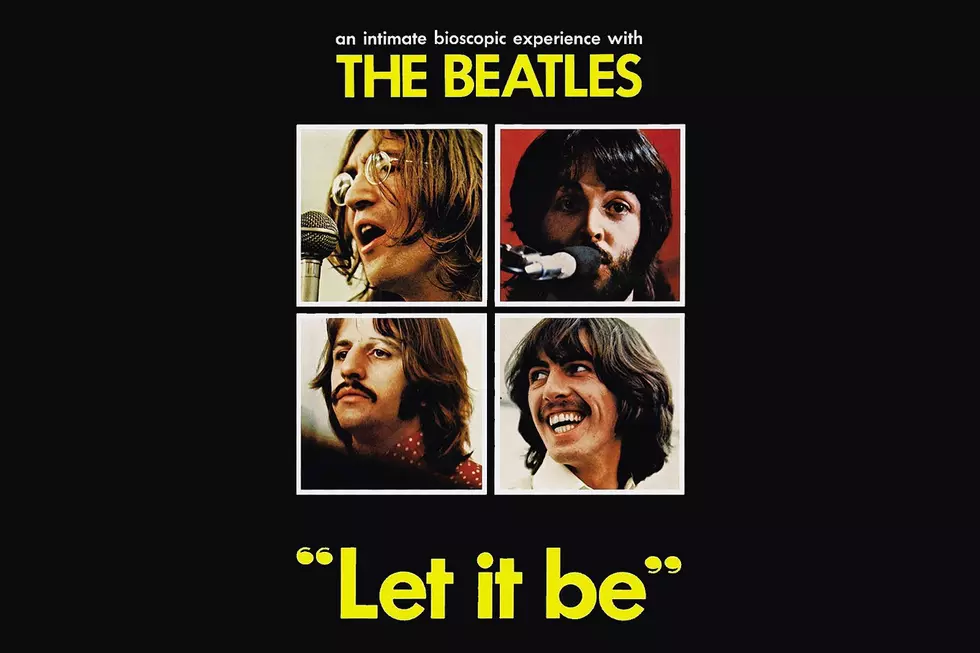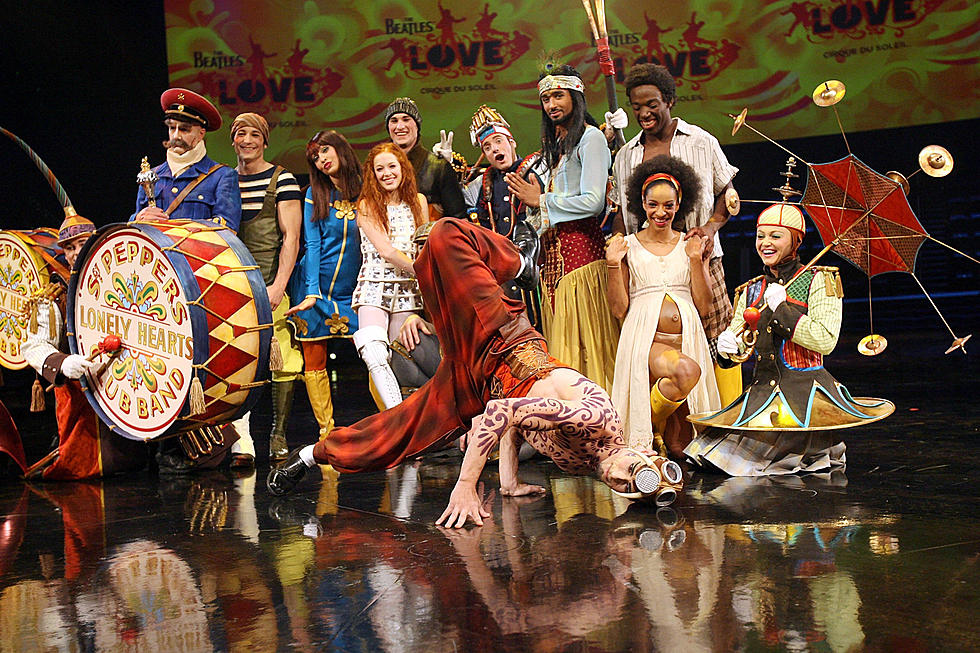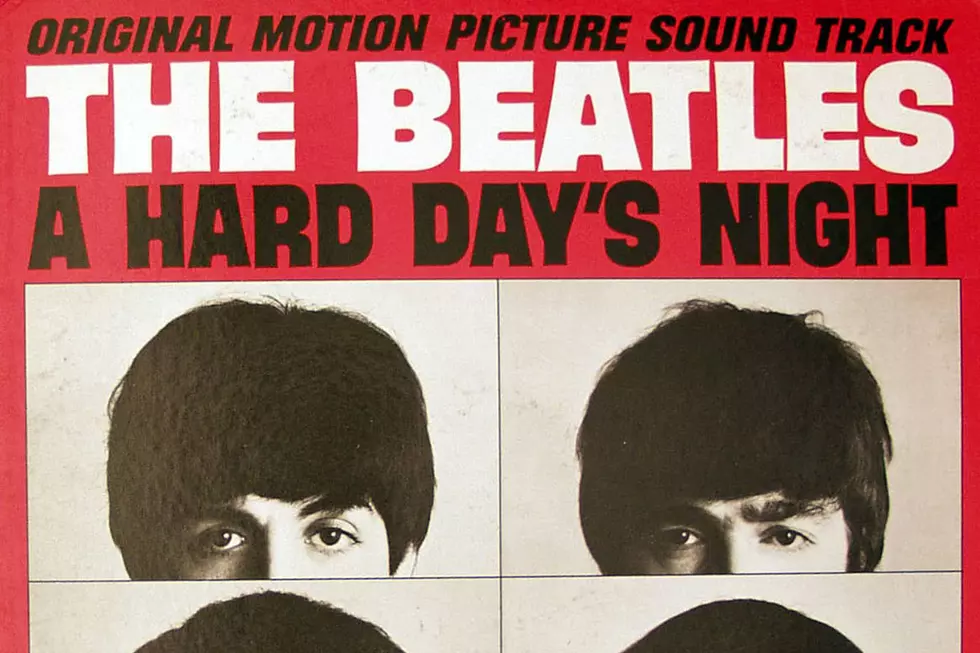
50 Years Ago: ‘Let It Be’ Movie Captures the Beatles’ Final Days
On May 13, 1970, fans got their final look at the Beatles as one cohesive unit when the documentary Let It Be was released. Unveiled roughly a month after the band had broken up - and a week after the album of the same name was released - many expected the movie to be a kind of Beatles wake, capturing the final, tumultuous days of the biggest band on Earth. While some moments of turmoil did make the final cut, the majority of Let It Be highlighted the group’s creative process.
Using the cinema verite style of filmmaking - also referred to as a fly-on-the-wall technique - director Michael Lindsay-Hogg gave viewers an inside look at the Beatles hard at work. There's no narration pushing the story, with only a few titles explaining what's unfolding onscreen. Instead, Lindsay-Hogg chose to let the band’s songs and conversations propel the film forward.
Let It Be is structured into three segments. The first shows the band rehearsing at Twickenham studio, the second displays their recording at Apple headquarters and the third is their now-famous rooftop performance.
Many of the scenes at Twickenham seem jubilant, far from the “hell” that John Lennon and Paul McCartney would later describe. The band fools around on the sound stage, jamming on early versions of “Two of Us” and “I’ve Got a Feeling.” At one point, McCartney is seen discussing the song “One After 909,” stating that the band had avoided recording the tune because it “always hated the words.” Later, Lennon and his wife, Yoko Ono, are shown waltzing to “I Me Mine.”
Watch the Trailer for 'Let It Be'
Still, arguably the most notable moment of the movie’s first act is a confrontation between McCartney and George Harrison. “I’m trying to help you, but all I hear is myself annoying you,” McCartney is heard saying. In response, the so-called Quiet Beatle speaks up: "I'll play whatever you want me to play, or I won't play at all if you don't want me to play. Whatever it is that will please you, I'll do it."
“I was aware that they were beginning to get on each other’s nerves,” Lindsay-Hogg later admitted in a conversation with Entertainment Weekly. The director sensed the tension building and positioned his cameras so the drama could unfold naturally. “I didn’t want them to feel the cameras were intrusive. I put one camera up in the gantry shooting down, so they didn’t see it. I moved the other camera back to the end of the studio. So they didn’t really know the cameras were there, which gave them the opportunity to get it off their chest.”
As Let It Be moved to Apple Studio for recording sessions, its tone becomes more serious. The band buckles down and focuses on hammering out new songs. Moments include Harrison and Ringo Starr working on “Octopus's Garden,” a bossa nova interpretation of “The Long and Winding Road” and a full run-through of “Let It Be.”
At one point, McCartney has a sidebar with Lennon to discuss Harrison’s resistance to performances. “He says ‘no films,’” McCartney explains. “But it’s wrong that. Very wrong that. Because you don’t know. What he means is no Help!, no Hard Day’s Night. And I agree. But no films? Cos this is a film, and now he doesn’t mind this.” McCartney goes on to note Harrison’s refusal to play TV shows or even get in front of a live audience. Lennon stares and smokes a cigarette while his bandmate complains.
Watch Paul McCartney and George Harrison Argue in 'Let It Be'
“That was a tough one to keep in,” Lindsay-Hogg later admitted, revealing that the Beatles had initially pressured him to cut the conversation. The director described the scene as McCartney “yammering on, and John looks like he’s about to die from boredom.”
While the first two sections of the movie gives viewers unprecedented access inside the Beatles’ world, the lasting image of Let It Be remains the band’s iconic rooftop performance. The surprise concert wasn't initially planned, but came about after things evolved.
“Originally, the project was going be a television special, and the documentary footage was going to be used to support the television special,” Lindsay-Hogg explained. “Then, when we realized we weren’t going to do the television special, I had this idea to at least aim somewhere, and to try to do some kind of concert.”
The band discussed various venues - including London clubs, an amphitheater in Greece or even on a boat.
“We’d been looking for an end to the film, and it was a case of ‘How are we going to finish this in two weeks’ time?’” McCartney recalled in The Beatles Anthology. “So, it was suggested that we go up on the roof and do a concert there.” “I remember it was cold and windy and damp,” added Starr, “but all the people looking out from offices were really enjoying it.”
Indeed, part of what makes the concert segment so enjoyable are the reactions of unsuspecting passersby. When the Beatles perform their opening rendition of “Get Back,” a handful of locals are shown on the streets below, glancing upward and pointing. As the band continues its set - delivering renditions of “Don’t Let Me Down,” “I’ve Got a Feeling” and “Dig a Pony” - more and more curious onlookers begin to fill the streets. Fans climb atop neighboring buildings, hoping to get an even better view of the once-in-a-lifetime performance.
Watch the Beatles Perform 'Don't Let Me Down'
Cops eventually intervene, closing the concert following an encore rendition of “Get Back.” Despite later claims that the police shut-down was staged, Lindsay-Hogg insisted that wasn’t the case.
“It was 100 percent real,” the director proclaimed. “We had a sense that there would be some ruckus about noise or whatever. And Apple was right around the corner from the police station. The police came around because they had some complaints from the Blue Meanies next door who owned the clothing factory. But what was so sweet was that when the policemen came up on the roof, they were so thrilled. Especially that young policeman you see in the film — you know he went home and told his wife not that he stopped the show, but that he was on the roof to hear the Beatles play.”
As the band exited the roof, Lennon delivered his famous closing line: "I'd like to say thank you on behalf of the group and ourselves, and I hope we passed the audition!" And that was it. The Let It Be film ends there and so - it turned out - did the Beatles.
“The great thing about the roof concert is, it’s the last time they played together in any kind of public setting," asserted Lindsay-Hogg. "We have it on film — the last time the most socially and musically influential group of the century played together. And they were happy up there that cold day.”
Despite the film’s happy ending, its post production was anything but. Lindsay-Hogg and his editors were constantly caught up in the Beatles’ inner turmoil, with each member overly concerned with coming across positively in the documentary. “It was hard to get some of those moments into the movie, because as well as being the stars, [the Beatles] were also the producers,” the director noted. “They all had slightly different agendas.”
A major sticking point was Ono, whose omnipresence was felt throughout the film’s original cut. After an early screening, Lindsay-Hogg received a phone call from Beatles management rep Peter Brown. ”There’s a lot of footage of John with Yoko in there, and I think it ought to come out,” the director recalled being told. After Lindsay-Hogg pushed back, Brown made his point more clear. “He said, ‘Let me put it another way. I’ve had three phone calls [from three Beatles] this morning saying it ought to come out.’” The movie was also later criticized for omitting the period where Harrison quit the band.
The Let It Be documentary premiered on May 13, 1970. It would go on to earn the Beatles an Academy Award for Best Original Song Score and a Grammy for Best Original Score. Still, the film’s legacy is muddled. Harrison reportedly disliked the movie, while it took McCartney decades to (mildly) warm up to it. The film was made available on VHS, but has never been given a DVD or Blu-ray release and is not available on any streaming platforms.
An updated project, helmed by Oscar-winning director Peter Jackson, will look to build on the original movie with additional material previously left on the cutting-room floor. The Beatles: Get Back, is scheduled for release in September 2020.
The Best Song on Every Beatles Album
More From Ultimate Classic Rock









